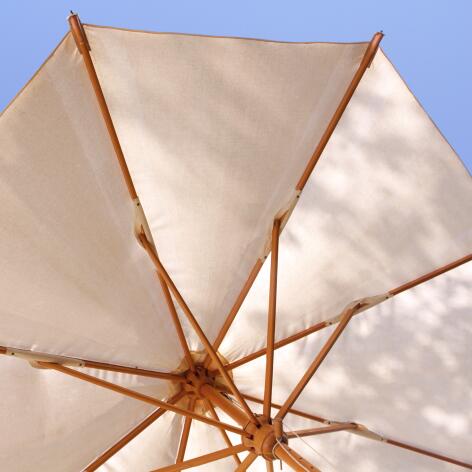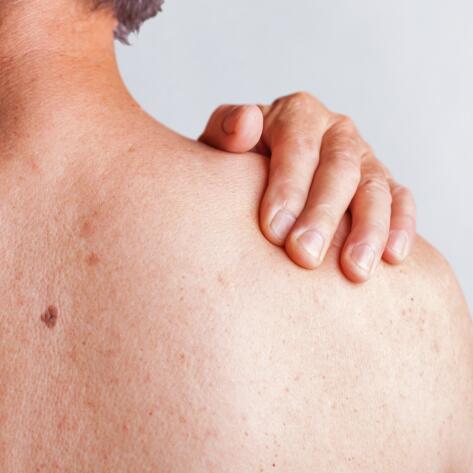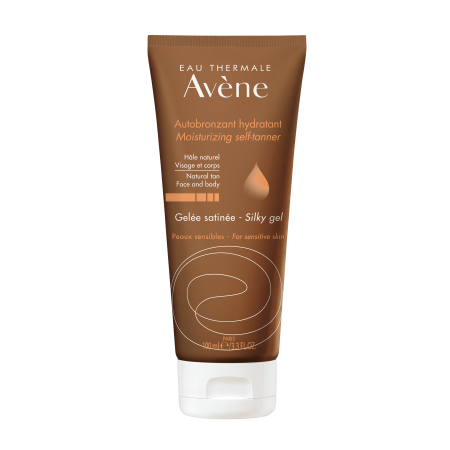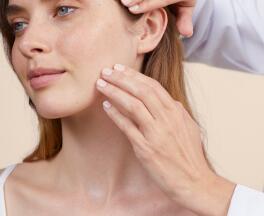Sunless tanning

What is tanning?
First of all, we need to understand what "tanning” means. Like a millefeuille, the skin is made up of several layers (well, three, so a little less than the pastry): the epidermis is the most superficial layer where the cells regenerate faster, the dermis is the intermediate layer, and the hypodermis is the deepest layer. It’s the cells of the epidermis that tan, thanks to the specialist cells that create the tan: melanocytes. Under the effect of UV rays, these cells produce a coloured pigment, melanin. The melanin is then expelled by the melanocytes and will colour the neighbouring cells of the epidermis.
The ability to tan depends above all on your skin type, or phototype, which goes hand in hand with your quantity of active melanocytes, and therefore your ability (or lack thereof) to produce melanin. Tanning and sunburn do not change the melanocytes in the short term. When all the melanin produced has been eliminated, the skin returns to its original colour. Its ability to tan always remains the same.
Tanning ability
Paragraph: Tanning ability is unique to each individual. It depends on the skin's phototype and the action of melanocytes, the cells in charge of producing the melanin that pigments the epidermis. The melanin in the skin forms a natural barrier to UV rays, but isn’t enough to protect the skin completely. Unfortunately, no matter what you do, you can't change the structure of your skin or its ability to tan.
The six skin phototypes
This phototype is very rare. It concerns people with albinism whose skin is unable to synthesis melanin due to a genetic deficiency. People with albinism have distinctive pale yellowish white hair, their eyes are not coloured, their skin is very light white, the slightest exposure to the sun causes sunburn and they never tan.
Recommended SPF: 50+
This skin type is very fair and milky-coloured, often with freckles. The hair colour is usually red. Even very short sun exposure will cause sunburn and they hardly tan at all. It is essential that this group stays protected from the sun.
Recommended SPF: 50+
Fair skin, sometimes with freckles and blond hair. These people almost always get sunburned, but they do tan lightly and have a light tan at the end of their holiday.
Recommended SPF: 50+
This is an intermediate phototype very common in France. These people are blond or brown-haired, with light or dark skin. They may get sunburnt with early sun exposure, but then develop a classic golden tan. The colour of the eyes and hair is important. Phototype 3 blonds or those with light eyes age more rapidly than brunettes with dark eyes under repeated sun exposure.
Recommended SPF: 30 or 50
This group is made up of people with dark skin and brown hair who rarely get sunburnt. They tan quickly because their skin contains a lot of melanin.
Recommended SPF: 20 or 25
This phototype is called the Mediterranean type. These are dark-skinned people who very rarely get sunburnt and tan very quickly. They have a dark tan.
Recommended SPF: 20 or 25
This group is made up of people with black skin and dark eyes who are very resistant to sun exposure. A low SPF sun cream is sufficient for them.
Recommended SPF: 10 (and 20 to 25 for the lighter parts of the skin).
What is self-tanning?
If you want to tan without the sun or prolong your tan at home, self-tanner is a good solution. The active ingredient in self-tanner is dihydroxyacetone (or DHA), which colours the surface layer of the skin and is gradually removed by superficial oxidation of the melanin on the surface of the skin - as opposed to a build-up of melanin, as is the case with natural tanning. It’s usually combined with erythrulose, an active ingredient of plant origin which evens out the colour.
Which self-tanner should you choose?
If you want visible results quickly, it’s better to use self-tanning products that will give you a tanned complexion in a few days. Progressive self-tanner can also be a good option for fair skinned people who are afraid of too much contrast.
How to apply self-tan properly
Applying self-tanner can be tricky: it risks leaving unsightly marks and an unnatural result.
Good habits
- For a more even application, apply your self-tanner by alternating your hands and using the entire surface of both hands.
- Don’t spend too much time on areas where the skin is thicker, such as the knees and elbows. Apply a little body lotion beforehand to dilute the self-tanner on these areas.
- Avoid applying self-tan to the heels.
- Where possible, exfoliate the day before self-tanning.
- Don’t forget to wash your hands thoroughly after application.

FRIENDLY, EXPERT ADVICE
The healthy glow of a diet rich in beta-carotene
Carrots not only make you feel good, they also make you look good! Foods rich in beta-carotenes (besides carrots, you can find them in oranges, tomatoes and peppers) help your skin to retain a light colour in winter and get a nice tan when the sun (finally) comes out.
Sunbeds: watch out for the dangers
The sun is in short supply and it’s a long winter... You’re getting tempted by a little sunbed session to give yourself a healthy glow and go a little lighter on your foundation. But sunbeds can be dangerous for the skin under the wrong conditions, and artificial UV is four times more toxic than natural UV. This is because it mainly uses UVA rays, which are responsible for skin ageing and, in part, for increasing the risk of melanoma.

Sun and tanning: watch out for hidden enemies
The sun isn’t always where you expect it to be... It might come as a surprise that you're not only at risk of the harmful effects of the sun when you're doing your best impression of a starfish at the beach! Your skin is also exposed to the sun when you're out and about in the city. For example, while the windows in your car or home filter out UVB, they allow a certain amount of UVA to pass through.
And the shade can be deceptive, too. Indirect radiation is a real danger, especially if you’re in an environment that reflects solar radiation (snow, light sand, water). That’s why it's important to protect your skin all year round, in all seasons, for example with tinted protective creams that protect against the sun while giving the skin a touch of colour, like a tinted cream or a foundation (combining the useful with the pleasing!).
The three types of sun radiation
- Direct radiation, which varies according to altitude, latitude, season and time of day
- Scattered radiation, scattered by atmospheric components such as clouds, haze and dust particles
- Radiation reflected from surfaces, which varies according to how reflective the surfaces are (snow, sand, sea, grass etc.).
Together, direct, diffuse and reflected radiation are called total solar radiation.

THE SOLUTION FOR SUNLESS TANNING
Moisturizing Self-Tanner - Silky Gel
A gradual, luminous and natural tan for sensitive skin on the face and body.
NEWSLETTER
We're always here for your skin!
All our advice on how to take care of your skin day to day.

Which skin care routine should you adopt?
Identify what it really needs with the help of our experts and discover the most suitable skin care routine for you.
